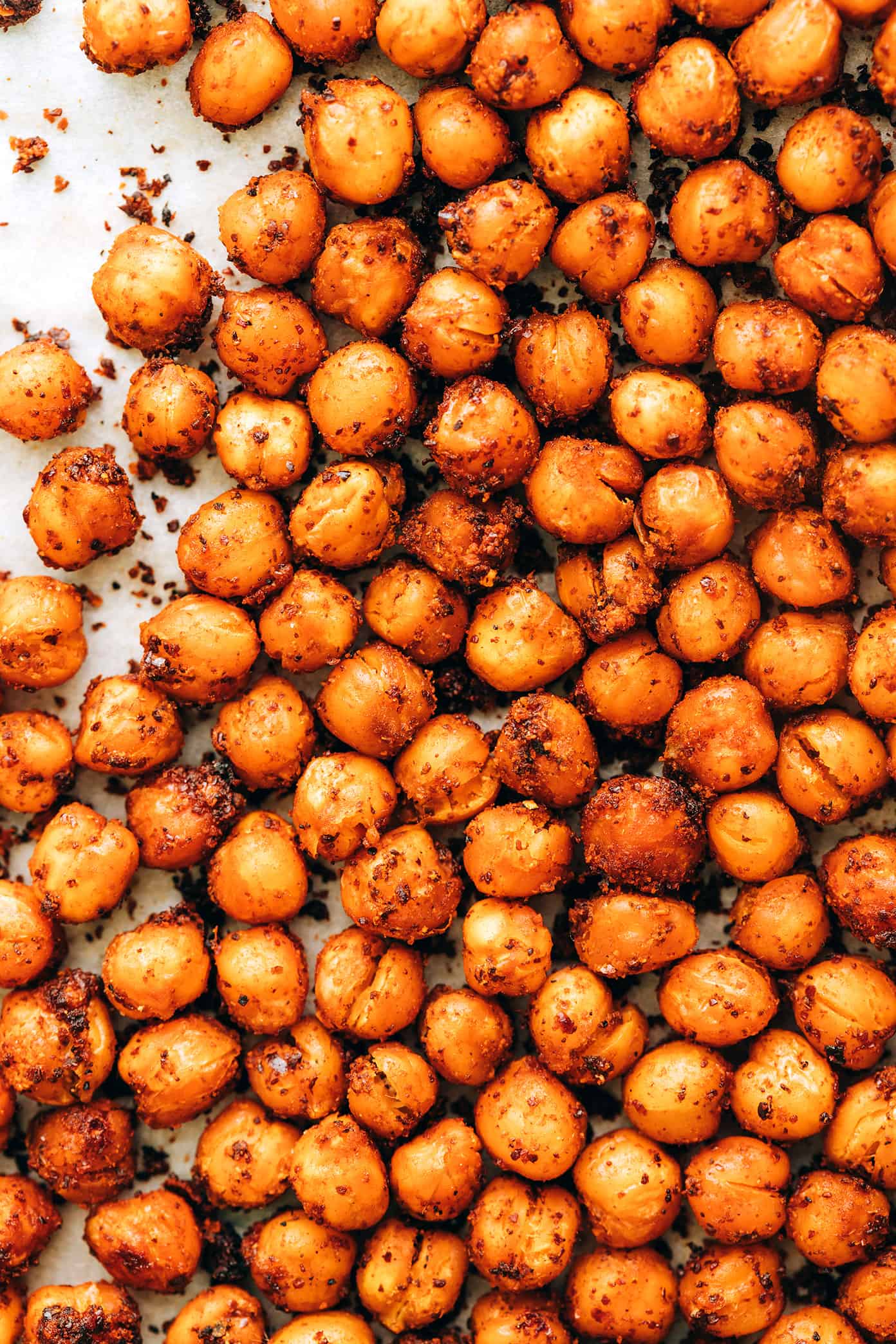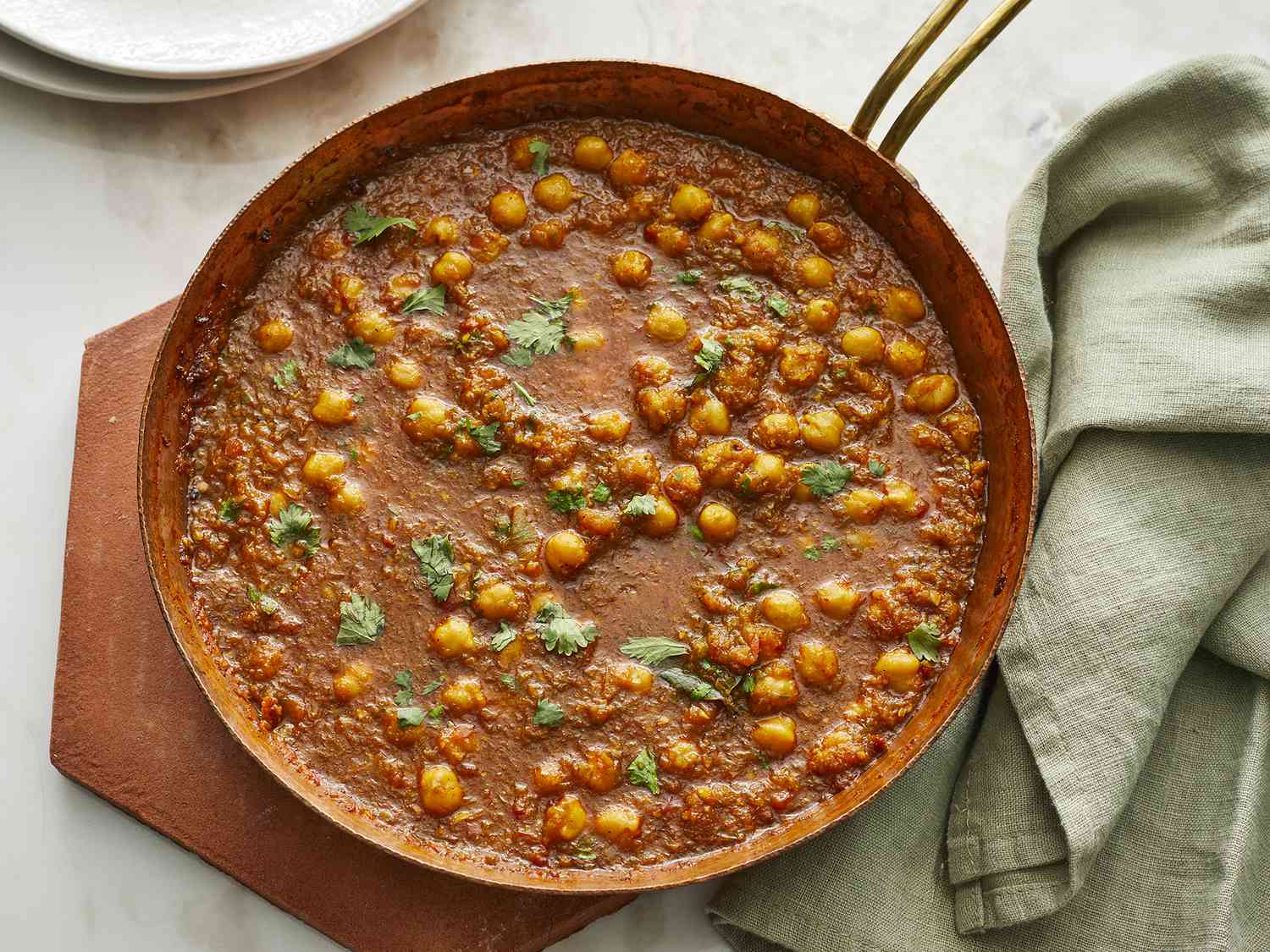To cook dried chickpeas, first, wash and soak them in water overnight. Then, boil them for 1-1.5 hours until tender, and they’re ready to use in various dishes.
Cooking dried chickpeas can be a versatile and cost-effective way to enjoy this nutritious legume. Whether you use them in salads, soups, or as a standalone side dish, cooking chickpeas from scratch allows you to tailor the flavor and texture to your liking.
Moreover, preparing chickpeas at home also ensures that you avoid any preservatives or additives often found in canned varieties. By following a few simple steps, you can easily incorporate these protein and fiber-rich legumes into your meals while also controlling the cooking process to suit your taste preferences.

Credit: www.gimmesomeoven.com
Benefits Of Cooking Dried Chickpeas
Enjoy the benefits of cooking dried chickpeas, an affordable and versatile ingredient. They are high in protein, fiber, and essential nutrients, making them a healthy addition to your meals. Cooking dried chickpeas also allows you to control the salt and seasoning levels, resulting in flavorful dishes tailored to your taste.
Benefits of Cooking Dried Chickpeas Dried chickpeas are a versatile and nutritious ingredient that offers a myriad of benefits when cooked. From their nutritional advantages to their cost-effectiveness and customizable flavors, there are many reasons to incorporate dried chickpeas into your cooking repertoire. Let’s explore the various benefits in detail.
Nutritional Advantages
Cooking dried chickpeas unlocks their nutritional potential, making them an excellent source of plant-based protein and fiber. One cup of cooked chickpeas contains about 15 grams of protein and 12 grams of fiber, making them a filling and satisfying addition to any meal. Additionally, they are rich in essential nutrients such as iron, magnesium, and folate, which are vital for a healthy diet.
Cost-effective Option
Cooking dried chickpeas is a cost-effective alternative to purchasing canned chickpeas. While canned chickpeas are convenient, they often come with added sodium and preservatives. By purchasing dried chickpeas in bulk, you can save money and have a pantry staple on hand for numerous recipes. With proper storage, dried chickpeas can last for a long time, providing an economical option for meal planning.
Customizable Flavors
When cooking dried chickpeas, you have the freedom to infuse them with various flavors according to your preferences. Whether you prefer a spicy, savory, or herbed taste, dried chickpeas can be easily customized to suit your culinary creations. From curries and salads to soups and stews, the adaptability of dried chickpeas makes them a versatile ingredient that can elevate the taste of any dish. By soaking and cooking them yourself, you can control the seasoning and create a personalized flavor profile that suits your palate. In conclusion, the benefits of cooking dried chickpeas extend beyond their nutritional value. By preparing them from their dried form, you can enjoy a cost-effective, customizable, and wholesome ingredient that adds depth and flavor to your meals. Whether you’re a culinary enthusiast or simply looking to enhance the nutritional content of your diet, consider incorporating dried chickpeas into your cooking routine for a delicious and rewarding experience.
Preparing Dried Chickpeas For Cooking
Before cooking dried chickpeas, it’s essential to prepare them properly. This includes soaking the chickpeas to rehydrate them and remove any dirt or debris, as well as rinsing and sorting for a cleaner, more uniform final dish.
Soaking Methods And Timelines
Soaking dried chickpeas is a crucial step to ensure they cook evenly and have a pleasant texture. There are two common methods for soaking chickpeas:
- Overnight Soak: In a large bowl, cover the chickpeas with 3-4 inches of water and let them soak for at least 8 hours or overnight.
- Quick Soak: If you’re short on time, you can boil the chickpeas in water for 2 minutes, then remove from heat, cover, and let them sit for 1 hour.
The length of soaking time depends on the method used, but generally, chickpeas should be soaked for a minimum of 8 hours or overnight for the best results.
Importance Of Rinsing And Sorting
Rinsing and sorting the chickpeas is an important step to remove any dirt, debris, or damaged beans. It’s essential for ensuring the cleanliness and uniformity of the final dish.
- Rinsing: Before soaking, rinse the chickpeas under cold water to remove any surface dirt or impurities.
- Sorting: After rinsing, spread the chickpeas out on a clean surface and remove any discolored, shriveled, or broken beans, as well as any small stones or debris.
Quick Soaking Techniques
When time is of the essence, there are a few quick soaking techniques that can expedite the rehydration process:
- Boiling: Bring the chickpeas to a boil in a pot of water, remove from heat, cover, and let them sit for 1-2 hours.
- Pressure Cooking: Use a pressure cooker to cook the chickpeas at high pressure for 10 minutes, then let them natural release for an additional 10 minutes.
These methods can significantly reduce soaking time while still yielding well-hydrated chickpeas ready for cooking.
Savory Recipes Using Cooked Chickpeas
When it comes to cooking dried chickpeas, they are a versatile and nutritious ingredient to have on hand. Once they are cooked, they can be used in a variety of savory recipes, adding a delicious and wholesome touch to your meals. Here are some enticing recipes that showcase the versatility of cooked chickpeas:
Chickpea Curry With Aromatic Spices
Chickpea curry with aromatic spices is a flavorful and satisfying dish that brings together the rich and earthy flavors of cooked chickpeas with a blend of aromatic spices. Whether you prefer a traditional Indian curry or a Middle Eastern-inspired version, this recipe allows for endless creativity and personalization. Serve it over steamed rice or with warm naan bread for a truly comforting meal.
Roasted Chickpeas With Various Seasonings
Crispy roasted chickpeas with various seasonings offer a delightful snack or a crunchy addition to salads and grain bowls. Once your chickpeas are cooked, toss them in a mix of olive oil, sea salt, and your choice of seasonings such as smoked paprika, cumin, or rosemary before baking them to golden perfection. These flavorful bites are a great option for on-the-go snacking or as a crunchy topping for your favorite dishes.
Chickpea Salad With Fresh Herbs And Veggies
A chickpea salad with fresh herbs and veggies is a vibrant and nutritious way to showcase the versatility of cooked chickpeas. Toss your chickpeas with a colorful array of fresh herbs and crisp veggies, such as cherry tomatoes, cucumber, and bell pepper. Dress the salad with a zesty vinaigrette and enjoy a refreshing and wholesome dish that’s perfect for a light lunch or as a flavorful side dish.
Tips For Cooking Perfect Dried Chickpeas
When it comes to cooking dried chickpeas, following a few simple tips can elevate your dish to a whole new level. Whether you’re making homemade hummus or a hearty chickpea curry, perfecting the cooking process is essential. Here are some foolproof tips for cooking perfect dried chickpeas.
Proper Cooking Time And Techniques
Before cooking dried chickpeas, it’s essential to soak them in water for at least 8 hours or overnight. This helps reduce the cooking time and aids in digestion. Once soaked, drain the chickpeas and rinse them thoroughly. To cook, place the chickpeas in a large pot, cover them with water, and bring to a boil. Then, reduce the heat to a simmer and cook for about 1 to 1.5 hours until they are tender but not mushy. Test for doneness by mashing a chickpea between your fingers.
Flavor-enhancing Ingredients And Methods
- Adding aromatics such as garlic, onions, or bay leaves can infuse the chickpeas with extra flavor during the cooking process.
- For an added depth of flavor, consider using vegetable or chicken broth instead of water.
- Incorporate spices like cumin, paprika, or turmeric while cooking to enhance the taste of the chickpeas.
Storing And Freezing Cooked Chickpeas
Once cooked, allow the chickpeas to cool completely before storing them. Store them in an airtight container in the fridge for up to 3-4 days. To freeze cooked chickpeas, place them in a freezer-safe container or bag, ensuring all the air is removed before sealing. They can be stored in the freezer for up to 3 months. When ready to use, allow the frozen chickpeas to thaw in the refrigerator overnight before incorporating them into your desired recipe.
Frequently Asked Questions
How Do You Cook Dried Chickpeas?
To cook dried chickpeas, soak them in water overnight. Drain and rinse them, then cook in a pot with fresh water for 1-2 hours or until tender. You can also use a pressure cooker for faster cooking. Add salt during the last 15-30 minutes.
Can You Cook Dried Chickpeas Without Soaking?
Yes, you can cook dried chickpeas without soaking. It will take longer to cook, around 1. 5 to 2 hours. Simmer the chickpeas in water until they are soft. Adding some salt and a bay leaf can enhance the flavor.
Can You Overcook Dried Chickpeas?
Yes, overcooking dried chickpeas can make them mushy and affect their taste and texture. It’s important to keep an eye on them while cooking to ensure they reach the desired firmness.
Why Add Baking Soda To Dry Chickpeas?
Adding baking soda to dry chickpeas helps to soften them during the cooking process, reducing the time needed to achieve the desired texture. This can be particularly useful when preparing dishes like hummus or falafel, where the texture of the chickpeas is important.
Conclusion
In sum, cooking dried chickpeas is a versatile and budget-friendly option for adding protein to your meals. With the right techniques and a little patience, you can enjoy delicious, nutritious chickpeas in a variety of dishes. Experiment with different cooking methods to find what works best for you and elevate your culinary skills.

